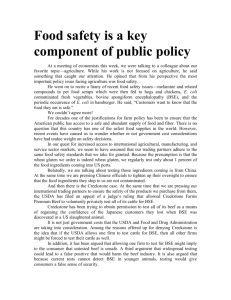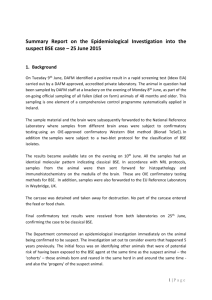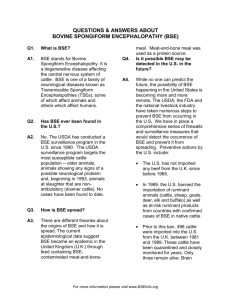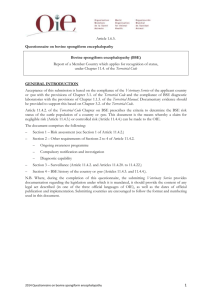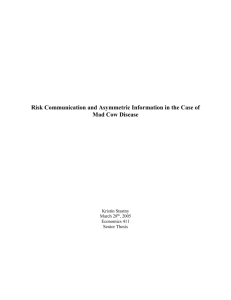BSE safeguards are working but continued vigilance is needed
advertisement
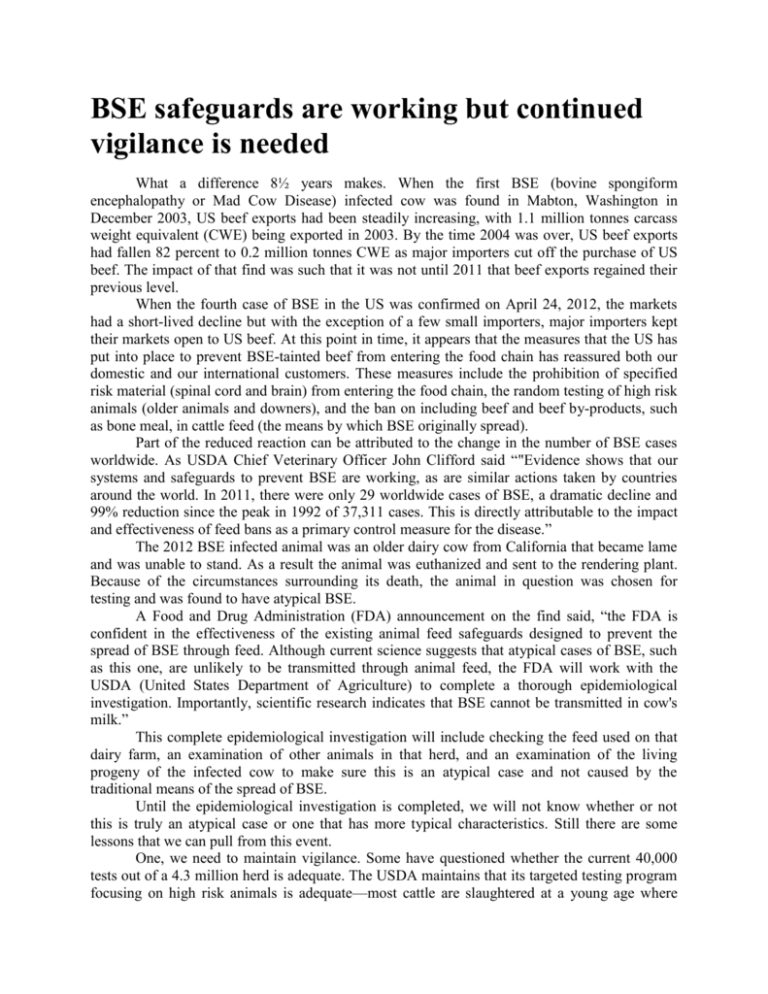
BSE safeguards are working but continued vigilance is needed What a difference 8½ years makes. When the first BSE (bovine spongiform encephalopathy or Mad Cow Disease) infected cow was found in Mabton, Washington in December 2003, US beef exports had been steadily increasing, with 1.1 million tonnes carcass weight equivalent (CWE) being exported in 2003. By the time 2004 was over, US beef exports had fallen 82 percent to 0.2 million tonnes CWE as major importers cut off the purchase of US beef. The impact of that find was such that it was not until 2011 that beef exports regained their previous level. When the fourth case of BSE in the US was confirmed on April 24, 2012, the markets had a short-lived decline but with the exception of a few small importers, major importers kept their markets open to US beef. At this point in time, it appears that the measures that the US has put into place to prevent BSE-tainted beef from entering the food chain has reassured both our domestic and our international customers. These measures include the prohibition of specified risk material (spinal cord and brain) from entering the food chain, the random testing of high risk animals (older animals and downers), and the ban on including beef and beef by-products, such as bone meal, in cattle feed (the means by which BSE originally spread). Part of the reduced reaction can be attributed to the change in the number of BSE cases worldwide. As USDA Chief Veterinary Officer John Clifford said “"Evidence shows that our systems and safeguards to prevent BSE are working, as are similar actions taken by countries around the world. In 2011, there were only 29 worldwide cases of BSE, a dramatic decline and 99% reduction since the peak in 1992 of 37,311 cases. This is directly attributable to the impact and effectiveness of feed bans as a primary control measure for the disease.” The 2012 BSE infected animal was an older dairy cow from California that became lame and was unable to stand. As a result the animal was euthanized and sent to the rendering plant. Because of the circumstances surrounding its death, the animal in question was chosen for testing and was found to have atypical BSE. A Food and Drug Administration (FDA) announcement on the find said, “the FDA is confident in the effectiveness of the existing animal feed safeguards designed to prevent the spread of BSE through feed. Although current science suggests that atypical cases of BSE, such as this one, are unlikely to be transmitted through animal feed, the FDA will work with the USDA (United States Department of Agriculture) to complete a thorough epidemiological investigation. Importantly, scientific research indicates that BSE cannot be transmitted in cow's milk.” This complete epidemiological investigation will include checking the feed used on that dairy farm, an examination of other animals in that herd, and an examination of the living progeny of the infected cow to make sure this is an atypical case and not caused by the traditional means of the spread of BSE. Until the epidemiological investigation is completed, we will not know whether or not this is truly an atypical case or one that has more typical characteristics. Still there are some lessons that we can pull from this event. One, we need to maintain vigilance. Some have questioned whether the current 40,000 tests out of a 4.3 million herd is adequate. The USDA maintains that its targeted testing program focusing on high risk animals is adequate—most cattle are slaughtered at a young age where BSE is unlikely to have developed to detectible levels—while its critics would want a more robust testing program. We have argued that packers who chose to test every animal should be permitted to do so. Given the low level of reaction to this event, it appears that packer level testing would not spook the market as was earlier used as a reason to prohibit such testing. And if consumers are willing to pay more for tested animals, they should have that choice. Such a testing program, like the one that was proposed by Creekstone Farms, would provide a check on the robustness of the current USDA testing program. Two, the US must vigorously maintain the ban on including beef and beef by-products in feed that is fed to beef and dairy cattle. Presently beef by-products can be included in poultry feed which on its face presents no problem. However, cattle feed can include chicken, litter which in addition to feathers and feces can include uneaten feed—which can include cattle byproducts. While the risk of transmitting BSE to cattle with this feed may be low, it would seem prudent to close this and other similar paths of potential transmission. Three, USDA meat inspectors need to be sure that beef packing plants strictly adhere to guidelines that prevent SRM from entering the food chain. While we agree with those who point out that someone is far more likely to die from E. coli tainted beef, that is no reason to let down our guard in protecting against the spread of BSE to the human population while we institute additional procedures to limit the incidence of E. coli. Daryll E. Ray holds the Blasingame Chair of Excellence in Agricultural Policy, Institute of Agriculture, University of Tennessee, and is the Director of UT’s Agricultural Policy Analysis Center (APAC). Harwood D. Schaffer is a Research Assistant Professor at APAC. (865) 9747407; Fax: (865) 974-7298; dray@utk.edu and hdschaffer@utk.edu; http://www.agpolicy.org. Reproduction Permission Granted with: 1) Full attribution to Daryll E. Ray and Harwood D. Schaffer, Agricultural Policy Analysis Center, University of Tennessee, Knoxville, TN; 2) An email sent to hdschaffer@utk.edu indicating how often you intend on running the column and your total circulation. Also, please send one copy of the first issue with the column in it to Harwood Schaffer, Agricultural Policy Analysis Center, 309 Morgan Hall, Knoxville, TN 37996-4519.

